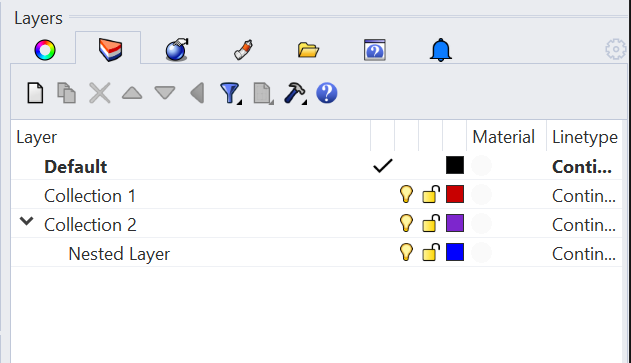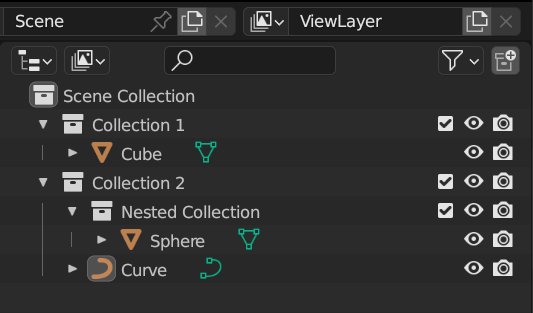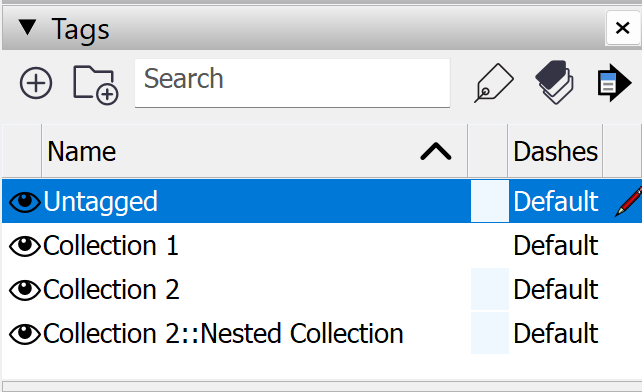# The Base Object
This post was originally part of the Making Speckle 2.0 series of posts on the community forum, it's been adapted as part of our dev docs. Check out the original on our forum (opens new window)!
# Preamble
The Base object is one of the smallest, yet most critical parts of our SDKs as it influences the serialisation & deserialisation process, hashing speed & correctness, overall performance, and how elements are defined in the Speckleverse. It's the building block of Speckle.
In this page we'll describe what it is and how to use it in more detail. Please note that currently examples are only in C#, equivalent implementations are available in our other SDKs.
# Using Base
The base object class (actually called Base) is the foundation of all data being transferred with Speckle. Any custom data structure that you want to transfer via Speckle should inherit from it. You can read more on creating your own schemas in the kits section
Base inherits from a C# dynamic object. This allows us to be strongly typed when needed, but as well fall back elegantly on dynamic properties when we want to, or need to. Imagine a crossover between a JavaScript object and a strongly defined C# class. It's quite cool! Furthermore, this removes some of the friction in aligning with our Python and JS implementations.
This is what it looks like:
// Simplified class definition:
public class Base {
public string id { get; set; } // this is the unique hash, generated from the serialized object
public string applicationId { get; set; } // a secondary (optional) identity value, for example the host application object id
public string speckle_type { get; } // this is the discriminator comprised of assembly name and inheritance
public long totalChildrenCount { get; } // this is the total number of detachable objects
}
2
3
4
5
6
7
# Direct Usage
Here's how you would use a "raw" Base object as a custom data structure. It's essentially just a dynamic object at heart.
var myObject = new Base();
// setting properties using dot notation requires cast to dynamic
((dynamic)myObject).myNewProperty = "foo";
// alternatively, just pretend it's a dictionary!
myObject["myNewProperty2"] = "bar";
2
3
4
5
6
7
You can define singular objects like this - like something representing a built element; alternatively you can define your own object collection types based on the source application you're working from.
var myCommit = new Base();
myCommit["RhinoLayer-A"] = new List<Base>() { ... };
myCommit["RhinoLayer-B"] = new List<Point>() { ... };
myCommit["RhinoLayer-A:RhinoLayer-C"] = new List<String>() { ... };
2
3
4
✋ All property names will need to be serializable and some characters prevent this. With dot notation this is more obvious, but using the dictionary method, invalid prop names will only show up at serialization time. There is a helper function IsPropNameValid within DynamicBase that you could use to check whenever you are dealing with handling indeterminate properties from other software. It also checks for double special characters or overwritten instance property names.
# Inherited Usage
Of course, you can define custom classes that inherit from Base and define strongly typed properties in there, which can then be accessed as usual; these can easily coexist alongside dynamic ones.
public class Point : Base {
// define a set of strongly typed properties
public double x { get; set; }
public double y { get; set; }
public double z { get; set; }
}
// Strongly typed props behave as you would expect them to:
var myPt = new Point();
myPt.x = 10;
var whatIsX = myPt.x;
// With a dynamic property, things are a bit more verbose, but still manageable:
((dynamic)myPt).bar = "baz";
var whatIsBar = ((dynamic)myPt).bar as string; // "baz"
// Alternative syntax, if you actually pass the property name at runtime:
var whatIsBar = myPt["bar"] as string; // "baz"
2
3
4
5
6
7
8
9
10
11
12
13
14
15
16
17
18
19
NOTE
Setting a dynamic property that overlaps with a strongly typed one will actually just set the strongly typed one 🙂
All kit object models are inheriting from the Base object class for their object definitions. This ensures that Speckle will be able to transport them!
# Detaching @
When defining your dynamic Base object properties, you can detach them by prepending an @ to your property name like so:
public class Foo : Base { }
public class Bar : Base { }
var foo = new Foo();
var bar = new Bar();
foo["@bar"] = bar;
2
3
4
5
6
7
Detaching a property stores that property value as a reference to another object. Why do this? Since it's possible to nest your Base inherited class objects, detaching any properties that may be assigned an object used by other objects keeps your data squeaky clean. Since detached objects are only serialized once during transport, detaching when appropriate means faster sending and receiving times as well ⚡
For a more in depth rundown of detachables and examples, check out the decomposition API section.
# Hashing
As you may or may not know, objects in Speckle are immutable. That means that if you change a property of one, it essentially gets a whole new identity; it's a whole new object (as far as the storage layer is concerned). This immutability is enforced through unique hashes that are dependent on the object's properties.
As a developer, you don't need to care about all this 🙌. Our SDKs takes care of correctly setting the hash of an object, at the correct time: at the end of the serialisation process. There's another purely cosmetic change that we made: the hash is now stored in an field called id. Why? Mostly so it's clear that it's the single object identity mechanism that should be used across all storage layers.
What about operations that are dependent on hashes? From our analysis of existing programmatic usage, you rarely really need the hash of an object before serialising (and, implicitly, storing it somewhere). When retrieving objects from "somewhere" (more on this in another post), the hash already exists, so you can check against an existing application state and manage updates.
var x = myObject.id; // will be populated only if this object has been previously serialised!
If you really need the hash (id!) before serialising it, don't panic! You can still generate it - nevertheless we've put that behind an explicit function call so you, as a developer, are aware of the extra cost that you will be incurring. Here's how the signature of that function looks like:
/// <summary>
/// Gets the id (a unique hash) of this object. ⚠️ This method fully serializes the object, which in the case of large objects (with many sub-objects), has a tangible cost.
/// <para><b>Hint:</b> Objects that are retrieved/pulled from a server/local cache do have an id (hash) property pre-populated.</para>
/// <para><b>Note:</b>The hash of a decomposed object differs from the hash of a non-decomposed object.</para>
/// </summary>
/// <param name="decompose">If true, will decompose the object in the process of hashing.</param>
/// <returns></returns>
public string GetId(bool decompose = false) { }
2
3
4
5
6
7
8
Noticed that decompose flag? You're sharp - check out the decomposition API section for more.
# The Speckle Objects Kit
Our SDKs come with our in-house Objects Kit comprised of Base inherited classes for your standard AEC needs. The core geometry kit contains all your basic elements like Points, Lines, Curves, and Breps, which are then used as properties for our more extensively defined BIM, Structural, and Civil elements. Read more in our Objects section!
# Displaying Base
In addition to the Base properties in our model above, you may also encounter certain common properties when exploring your data in our web viewer. The objects in our Objects Kit come with properties that we use to display them in our frontend:
// Class definition with additional display properties
public class Foo : Base {
[DetachProperty]
public List<Mesh> displayValue { get; set; } // Mesh objects that represent the geometry of this Base object, e.g. used to render surfaces, or solid objects in our viewer
// or
[DetachProperty]
public Polyline displayValue { get; set; } // a polyline used to render complex curve objects in our viewer
public Box bbox { get; set; } // a bounding box used to assist with object selection in our viewer
}
2
3
4
5
6
7
8
9
10
The displayValue property is a special property within the Objects kit. It is common for classes inheriting Base to represent complex, conceptual, or domain specific objects.
The displayValue property can be used to provide a geometric representation to help display the object in applications that don't have a native form.
For example, When receiving BIM types like Wall, Floor, Beam, etc into a non-BIM application like Rhino, Unity, or our web viewer, these applications have no way of rendering these elements natively. The displayValue property represents fallback geometry, that will automatically be used by applications when receiving types without a native conversion.
The displayValue property is expected to be either an object inheriting Base or a List of objects inheriting Base.
Ideally, these types should be simple geometry types like Mesh or Polyline as these can be converted in all (or almost all) receiving applications (However, this rule isn't enforced for custom Base objects, and in theory, any type inheriting Base can be used .)
# Collections
Whether to represent Layers, Categories, Tags, Collections, Groups, or hierarchical containers,
it is common to see a natural grouping of objects within a 3D model.
The Collection type provides a unified way to represent hierarchical collections of Speckle objects
in a queryable, filterable way and is useful for interoperability between applications.
A collection object only has three properties (in addition to those inherited from the Base Speckle object)
and is completely kit/domain agnostic.
name- Any (non-empty) human-readablestringname, one not necessarily unique.
collectionType- Anystringvalue describing the type of collection, used for convenience, and specific interop.
elements- AList<Base>representing child objects, may include nestedCollectionobjects.
Our new front-end (fe2) is designed to display Collection in the scene explorer.

Suppose we look at how Collection objects are used inside Speckle versions.
We see within the Collection’s elements property; we can expect any objects to be nested, including sub-collections.
Importantly, however, we only see Collection objects nested under other Collections.
Unlike other speckle objects which may form any directed acyclic graph (opens new window) structure,
Collections must be in a true directed tree structure.
Diagram of collections within a Speckle commit, illustrating collections can contain both sub-collections and other objects under the
elementsproperty. While theelementsproperty of geometry objects do not contain Collections
With the exception of the Revit connector, connectors will send Collections from the layer/tag/collection structure.
| Rhino | Blender | Sketchup |
|---|---|---|
 |  |  |

